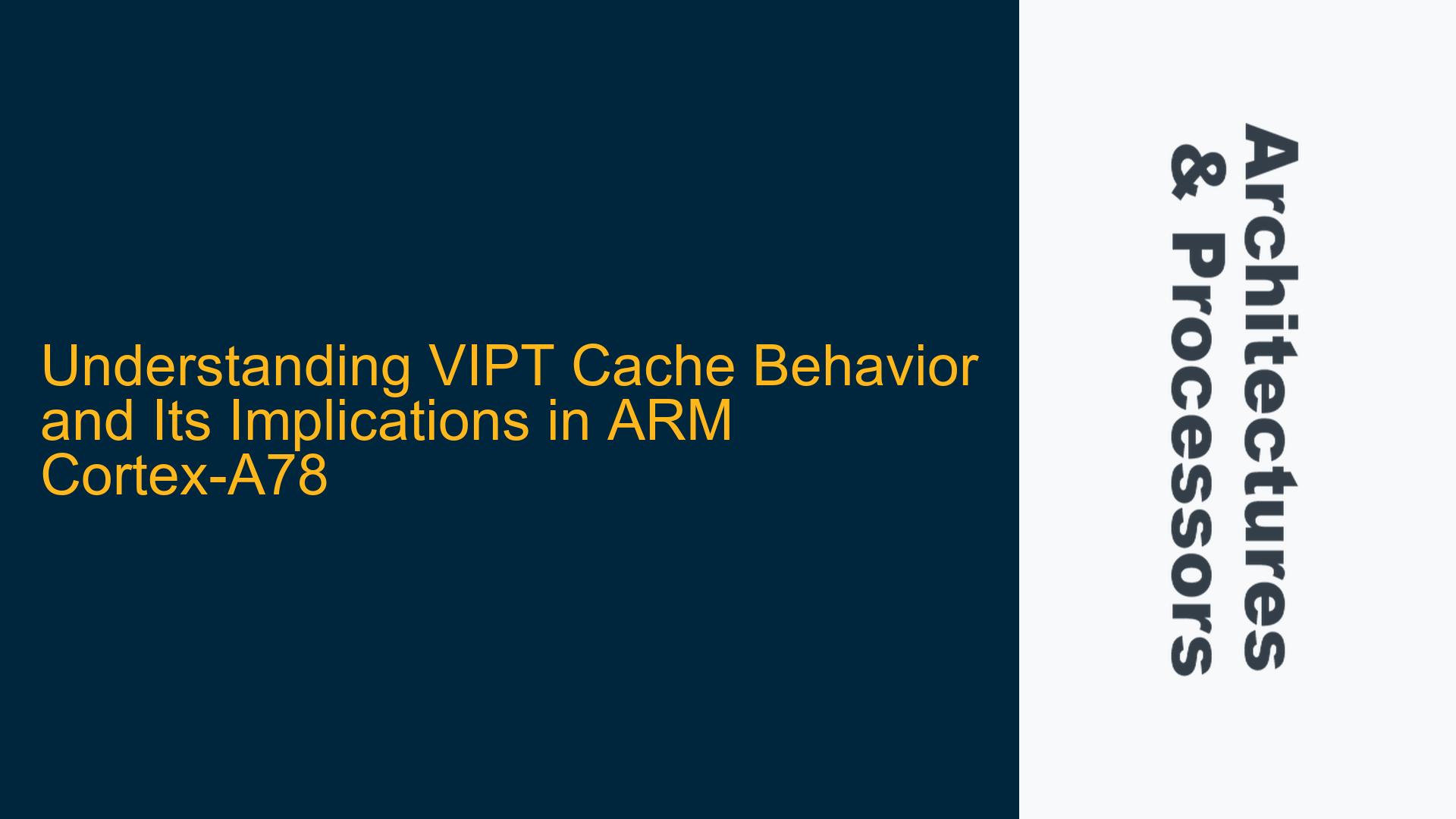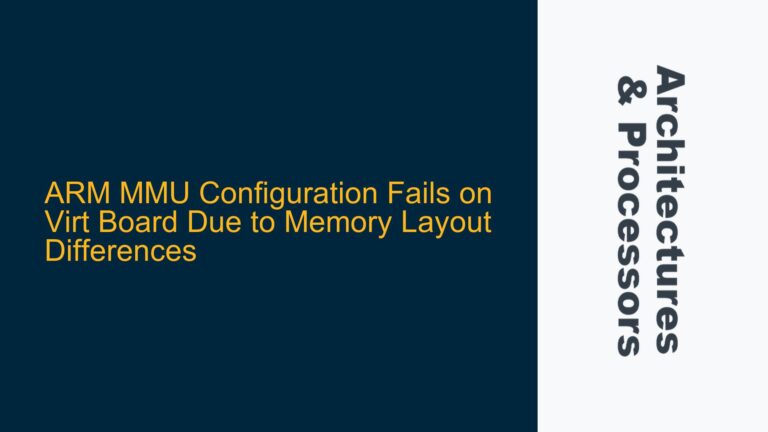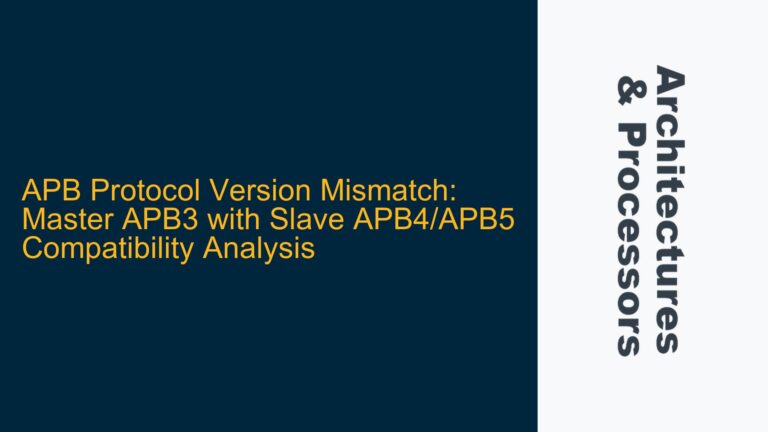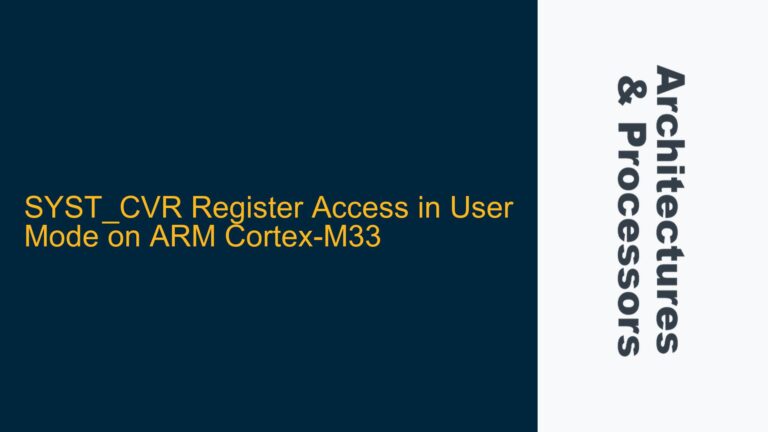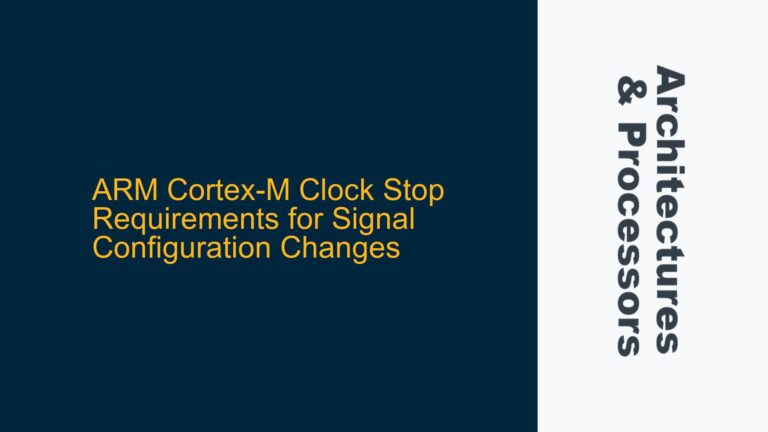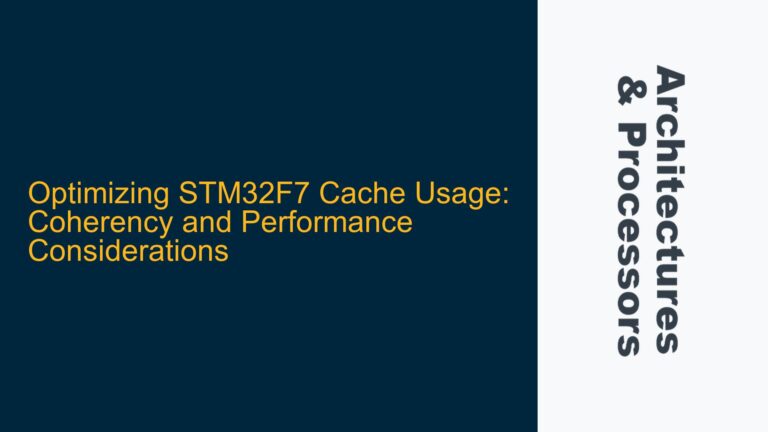ARM Cortex-A78 L1 Cache: VIPT Behaves as PIPT
The ARM Cortex-A78 employs a sophisticated cache architecture where the L1 cache operates under a Virtual Index Physical Tag (VIPT) scheme but behaves like a Physically Indexed Physically Tagged (PIPT) cache. This unique behavior is crucial for understanding how the Cortex-A78 manages memory accesses efficiently while avoiding common pitfalls associated with traditional VIPT caches.
In a typical VIPT cache, the index portion of the cache address is derived from the virtual address, while the tag is derived from the physical address. This setup allows for faster cache lookups since the index can be determined without waiting for the virtual-to-physical address translation. However, VIPT caches can suffer from aliasing issues, where multiple virtual addresses map to the same physical address, potentially leading to cache coherence problems.
The Cortex-A78’s L1 cache, however, is designed to behave like a PIPT cache, meaning that it avoids these aliasing issues by ensuring that the index and tag are both derived from the physical address. This is achieved through careful microarchitectural design, where the cache hardware resolves any potential aliasing problems internally. As a result, software can treat the L1 cache as if it were PIPT, simplifying cache management and ensuring consistent behavior across different memory access patterns.
This behavior is particularly important in high-performance systems where cache coherence and low-latency memory access are critical. By behaving like a PIPT cache, the Cortex-A78’s L1 cache provides the performance benefits of a VIPT cache without the associated complexity and potential for aliasing issues.
Memory Access Flow and Cache Hierarchy in Cortex-A78
Understanding the memory access flow in the Cortex-A78 is essential for grasping how the VIPT-behaves-as-PIPT mechanism works. When a memory access operation is initiated, the core first attempts to retrieve the data from the L1 cache. If the data is not found in the L1 cache (a cache miss), the core then proceeds to check the L2 and L3 caches, and finally, if necessary, accesses the main memory through the Memory Management Unit (MMU).
The cache hierarchy in the Cortex-A78 is designed to minimize latency and maximize throughput. The L1 cache is the fastest and smallest, typically divided into separate instruction and data caches. The L2 cache is larger and shared among multiple cores, while the L3 cache is even larger and shared across the entire processor. This hierarchical structure ensures that frequently accessed data is kept as close to the core as possible, reducing the need for slower memory accesses.
In the context of the VIPT-behaves-as-PIPT mechanism, the L1 cache’s behavior is critical. Since the L1 cache is the first point of contact for memory accesses, its ability to avoid aliasing issues and provide consistent behavior is paramount. The Cortex-A78 achieves this by ensuring that the L1 cache’s index and tag are both derived from the physical address, effectively making it behave like a PIPT cache. This design choice simplifies the cache management process for software, as it does not need to handle the complexities associated with traditional VIPT caches.
Page Coloring and Cache Management in Cortex-A78
One of the challenges associated with VIPT caches is the potential for cache aliasing, where multiple virtual addresses map to the same physical address, leading to cache coherence issues. In the Cortex-A78, this problem is mitigated through the use of page coloring, a technique that ensures that different virtual pages are mapped to different cache sets, thereby avoiding aliasing.
Page coloring works by partitioning the cache into different "colors," where each color corresponds to a specific set of cache lines. By assigning different virtual pages to different colors, the system ensures that no two virtual pages will map to the same cache set, thus preventing aliasing. This technique is particularly useful in systems with large caches, where the cache size exceeds the page size, as it allows for efficient cache utilization without the risk of aliasing.
In addition to page coloring, the Cortex-A78 also employs other cache management techniques to ensure optimal performance. These include cache line replacement policies, such as Least Recently Used (LRU), and cache prefetching mechanisms that anticipate future memory accesses and preload data into the cache. Together, these techniques help to maximize cache hit rates and minimize latency, ensuring that the Cortex-A78 delivers high performance across a wide range of workloads.
Page-Based Hardware Attributes (PBHA) and Their Role in Cache Management
The Cortex-A78 introduces Page-Based Hardware Attributes (PBHA), a feature that allows the system designer to specify certain attributes for individual memory pages. These attributes can influence how the cache interacts with the memory system, providing additional control over cache behavior.
However, it is important to note that PBHA is not directly related to the VIPT-behaves-as-PIPT mechanism. Instead, PBHA is a CPU implementation-defined feature that allows the SoC designer to customize the behavior of the memory system based on specific requirements. For example, PBHA can be used to specify whether a particular page should be cached or uncached, or to control the cache replacement policy for that page.
While PBHA does not directly address the challenges associated with VIPT caches, it provides additional flexibility in cache management, allowing system designers to optimize performance for specific workloads. By carefully configuring PBHA, designers can ensure that the cache behaves in a way that maximizes performance and minimizes latency, even in complex systems with diverse memory access patterns.
Conclusion: Optimizing Cache Performance in ARM Cortex-A78
The ARM Cortex-A78’s L1 cache, with its VIPT-behaves-as-PIPT mechanism, represents a sophisticated approach to cache design that balances performance and complexity. By behaving like a PIPT cache, the Cortex-A78 avoids the aliasing issues associated with traditional VIPT caches, simplifying cache management and ensuring consistent behavior across different memory access patterns.
To fully leverage the capabilities of the Cortex-A78’s cache architecture, system designers must understand the underlying mechanisms and employ appropriate cache management techniques. Page coloring, cache replacement policies, and PBHA are all tools that can be used to optimize cache performance and ensure that the system delivers high performance across a wide range of workloads.
By carefully considering these factors and implementing best practices in cache management, designers can unlock the full potential of the Cortex-A78’s cache architecture, delivering systems that are both powerful and efficient. Whether you are designing a high-performance computing system or a power-efficient embedded device, understanding the nuances of the Cortex-A78’s cache behavior is essential for achieving optimal performance.
